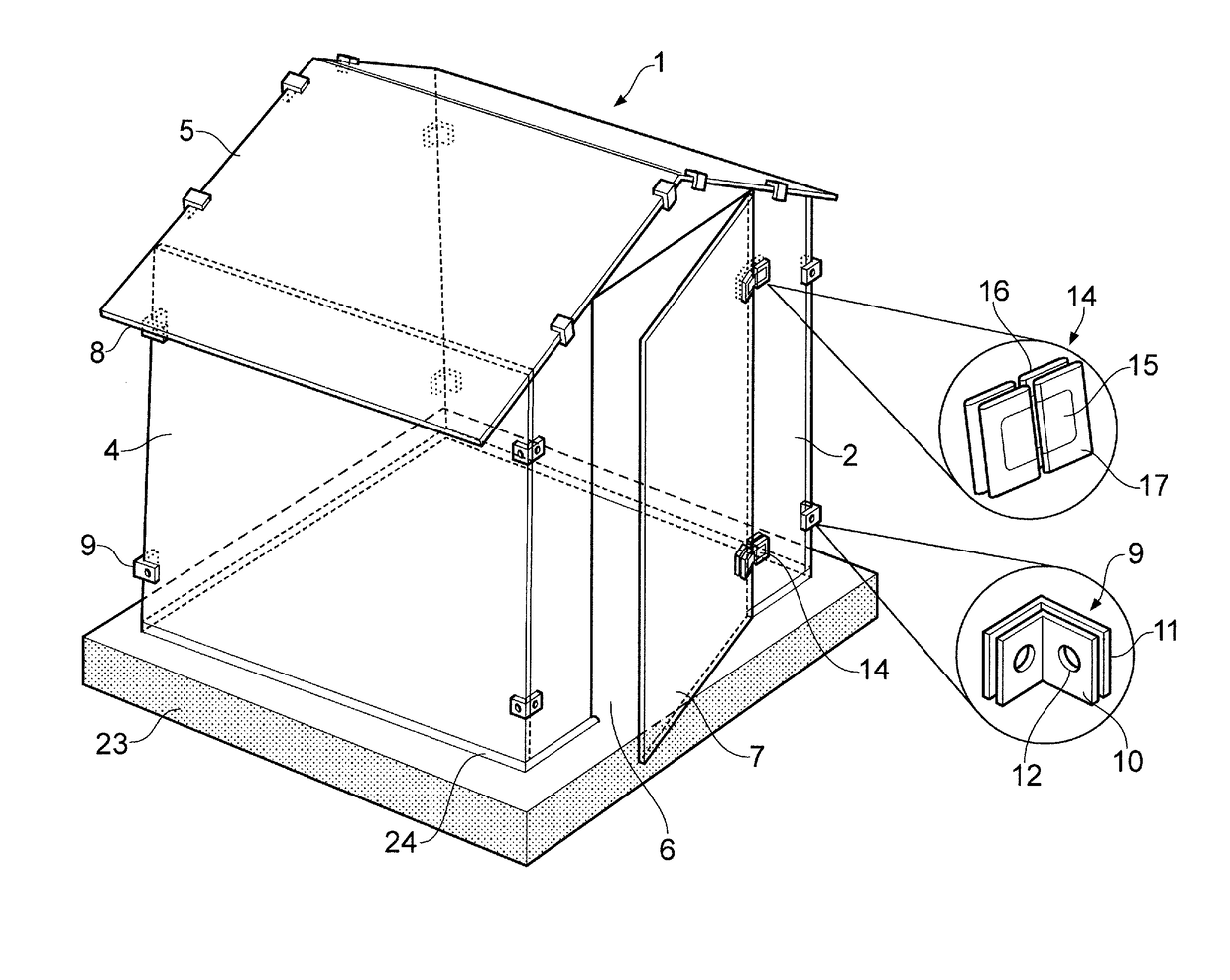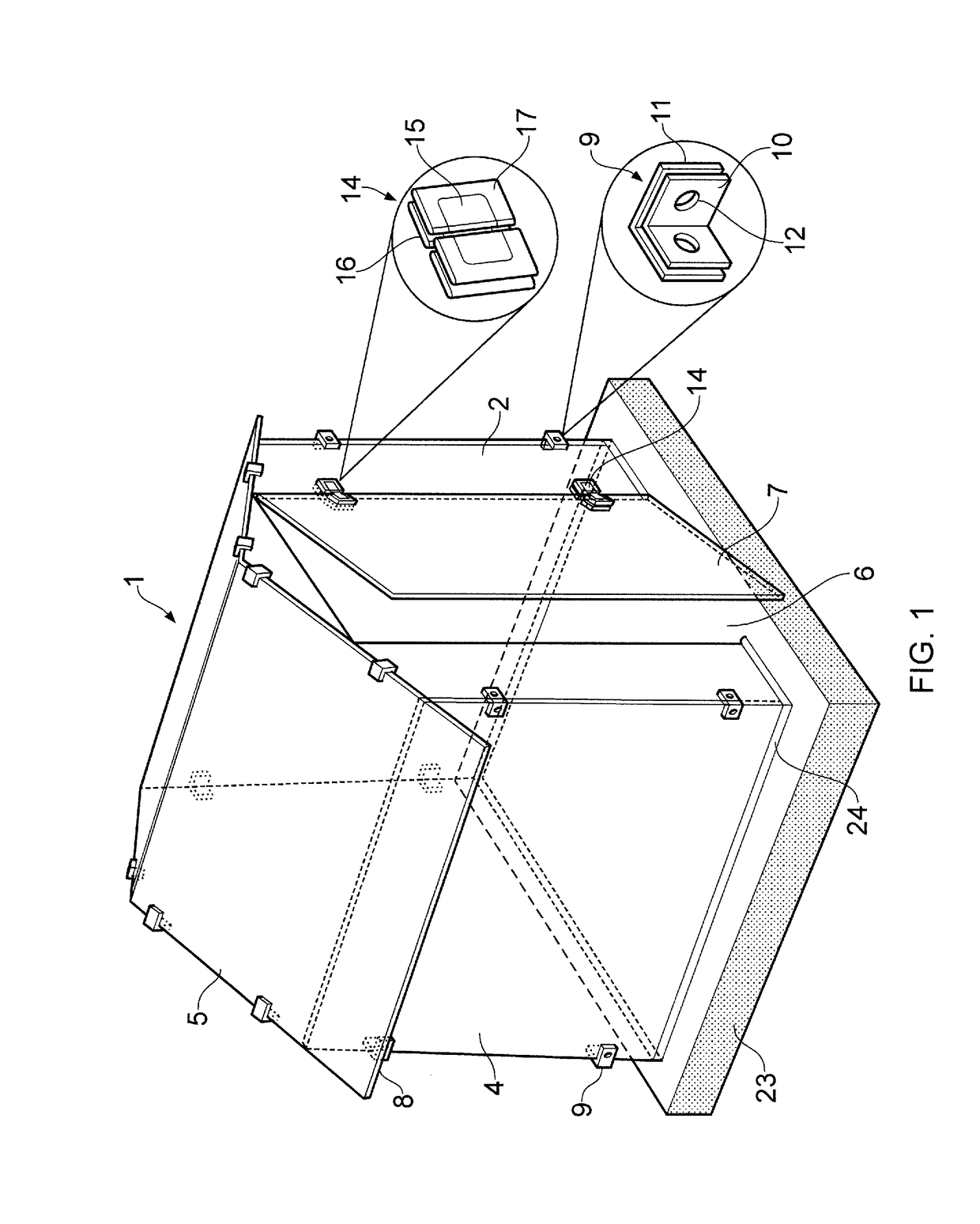Greenhouse
a greenhouse and frameless technology, applied in greenhouse cultivation, climate change adaptation, horticulture, etc., can solve the problems of difficult and time-consuming construction, difficulty in moving, and inconvenient assembly, and achieve the effects of easy replacement, slow and difficult assembly, and complicated construction
- Summary
- Abstract
- Description
- Claims
- Application Information
AI Technical Summary
Benefits of technology
Problems solved by technology
Method used
Image
Examples
Embodiment Construction
[0104]A greenhouse according to an embodiment of the invention is illustrated in FIG. 1.
[0105]The greenhouse (1) is formed of a front wall (2), a rear wall (3), two side walls (4) and a roof (5). The front wall, rear wall and two side walls (2,3,4) are positioned at right angles to each other to form a rectangular footprint. The side walls (4) and the rear wall (3) are each formed from a respective single transparent panel. In contrast, the front wall (2) is formed from three transparent panels which are arranged to provide an opening (6) for a door (7) (described later). Specifically, two of the panels of the front wall (2) are positioned to either side of the opening for the door, and the further panel of the front wall (2) has a triangular shape and is positioned above the opening (6) for the door (7) between the opening (6) and the roof (5). Of course, in other embodiments the front wall (2) may be formed from a single panel.
[0106]The front and rear walls (2,3) are longer than t...
PUM
 Login to View More
Login to View More Abstract
Description
Claims
Application Information
 Login to View More
Login to View More - R&D
- Intellectual Property
- Life Sciences
- Materials
- Tech Scout
- Unparalleled Data Quality
- Higher Quality Content
- 60% Fewer Hallucinations
Browse by: Latest US Patents, China's latest patents, Technical Efficacy Thesaurus, Application Domain, Technology Topic, Popular Technical Reports.
© 2025 PatSnap. All rights reserved.Legal|Privacy policy|Modern Slavery Act Transparency Statement|Sitemap|About US| Contact US: help@patsnap.com



